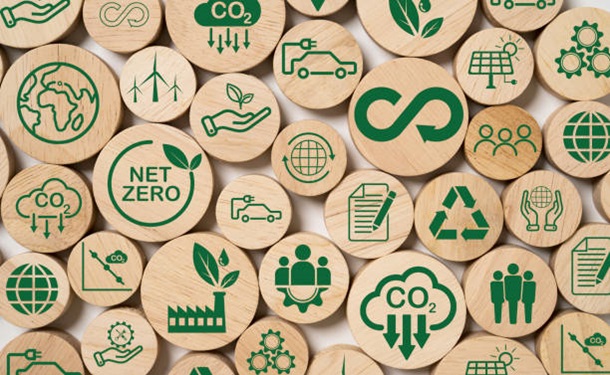Developing Social Studies Teaching Materials for Conflict Resolution Education Using the Branch's ADDIE Research Method
Downloads
This study aims to develop social studies teaching materials focused on conflict resolution education, addressing the unique needs of Class VII students in Pasaman, Indonesia. Conflict resolution is a crucial skill in today's global context, particularly in social studies, which integrates essential principles and competencies. Using Branch’s ADDIE research method, the study highlights the urgent need for a specialized guidebook tailored to Pasaman's local context and cultural nuances. Data collection revealed that 57.6% of students had low comprehension of conflict resolution, 28.2% medium, and 14.1% high. These findings emphasize the importance of differentiated instructional materials that cater to diverse learning needs. The proposed guidebook is designed not only to improve conflict resolution skills but also to incorporate elements of local wisdom, fostering a more relevant and engaging learning experience. The study further underscores the collaborative role of stakeholders in developing materials that align with students' understanding levels and cultural backgrounds. By bridging the gap between theory and practice, this research offers a model for creating inclusive, context-specific teaching strategies. The novelty of this study lies in its focus on local adaptation, contributing to a more effective learning process and supporting efforts to cultivate peace and resilience in educational settings.
Downloads
[1] Crawford, D., & Bodine, R. (1996). Conflict Resolution Education: A Guide to Implementing Programs in Schools, Youth-Serving Organizations, and Community and Juvenile Justice Settings [dataset]. PsycEXTRA Dataset, American Psychological Association (APA), Washington, United States. doi:10.1037/e511932006-001.
[2] Roulston, S., McGuinness, S., Bates, J., & O’Connor-Bones, U. (2023). School partnerships in a post-conflict society: addressing challenges of collaboration and competition. Irish Educational Studies, 42(2), 257–274. doi:10.1080/03323315.2021.1964562.
[3] Karabulut‐Ilgu, A., Madson, K., Miner, N., Shane, J., & Burzette, R. (2023). Analysis of teamwork skill development in a flipped civil engineering course. Computer Applications in Engineering Education, 32(1), 22680. doi:10.1002/cae.22680.
[4] Rijken, P. E., & Fraser, B. J. (2024). Effectiveness of project-based mathematics in first-year high school in terms of learning environment and student outcomes. Learning Environments Research, 27(2), 241–263. doi:10.1007/s10984-023-09477-7.
[5] Paredes-Velasco, M., Arnal-Palacian, M., Urquiza-Fuentes, J., & Martin-Lope, M. (2023). Improving Soft Skills Through an Interdisciplinary Approach in a Realistic Context Between Education and CS Students in an HCI Course. IEEE Transactions on Education, 66(6), 579–590. doi:10.1109/TE.2023.3269691.
[6] Ajrouch, K. J., Hu, R. X., Webster, N. J., & Antonucci, T. C. (2023). Friendship Trajectories and Health Across the Lifespan. Developmental Psychology, 60(1), 94–107. doi:10.1037/dev0001589.
[7] Van Steenbrugge, H., & Remillard, J. T. (2023). The multimodality of lesson guides and the communication of social relations. ZDM - Mathematics Education, 55(3), 579–595. doi:10.1007/s11858-023-01479-2.
[8] Bodine, R. J., & Crawford, D. K. (1998). The Handbook of Conflict Resolution Education. A Guide to Building Quality Programs in Schools. The Jossey-Bass Education Series, Jossey-Bass, United States.
[9] Lithoxoidou, A., Seira, E., Vrantsi, A., & Dimitriadou, C. (2021). Promoting resiliency, peer mediation and citizenship in schools: The outcomes of a three-fold research intervention. Participatory Educational Research, 8(2), 109–128. doi:10.17275/PER.21.32.8.2.
[10] Robins, A. (2020). Peacetech Technology Education in Post-Conflict Youth Peacebuilding Programs. Education Research and Perspectives, 47, 1–24,. doi:10.70953/erpv47.20001.
[11] Kim, J. E., & Park, J. (2023). Elementary Students’ Management of Conflicts in an Engineering Design Process and Its Effects on Their Group Interaction Progress. Asia-Pacific Science Education, 9(1), 174–193. doi:10.1163/23641177-bja10060.
[12] Horton, P., Forsberg, C., & Thornberg, R. (2023). Places and spaces: exploring interconnections between school environment, resources and social relations. Educational Research, 65(4), 462–477. doi:10.1080/00131881.2023.2252829.
[13] UNICEF. (2017). Bullying in Indonesia: Key Facts, Solutions, and Recommendations. The United Nations Children's Fund: UNICEF Indonesia, Jakarta, Indonesia. Available online: https://www.unicef.org/indonesia/media/5691/file/Fact Sheet Perkawinan Anak di Indonesia.pdf (accessed on June 2025). (In Indonesian).
[14] Bowes, L., Joinson, C., Wolke, D., & Lewis, G. (2015). Peer victimisation during adolescence and its impact on depression in early adulthood: prospective cohort study in the United Kingdom. BMJ, 350(June), h2469. doi:10.1136/bmj.h2469.
[15] Chester, K. L., Callaghan, M., Cosma, A., Donnelly, P., Craig, W., Walsh, S., & Molcho, M. (2015). Cross-national time trends in bullying victimization in 33 countries among children aged 11, 13 and 15 from 2002 to 2010. European Journal of Public Health, 25(2), 61–64. doi:10.1093/eurpub/ckv029.
[16] Gottfredson, G. D., Gottfredson, D. C., Payne, A. A., & Gottfredson, N. C. (2005). School climate predictors of school disorder: Results from a national study of delinquency prevention in schools. Journal of Research in Crime and Delinquency, 42(4), 412–444. doi:10.1177/0022427804271931.
[17] OECD. (2019). PISA 2018 Results (Volume III): What school life means for students’ lives. Organisation for Economic Co-operation and Development, OECD Publishing, Paris, France. doi:10.1787/acd78851-en.
[18] Dewi, S. F., Indrawadi, J., Yulika, F., & Saifullah, S. (2022). Conflict Resolution Education Design in Indonesia. International Journal of Interdisciplinary Educational Studies, 17(1), 39–57. doi:10.18848/2327-011X/CGP/v17i01/39-57.
[19] Ayegbusi, E. T., & Lucas, A. O. (2020). Teachers decisional participation and job satisfaction in secondary schools in Ekiti State, Nigeria. International Journal of Educational Administration and Policy Studies, 12(1), 1–11. doi:10.5897/ijeaps2015.0423.
[20] Hakvoort, I., & Olsson, E. (2014). The school’s democratic mission and conflict resolution: Voices of Swedish educators. Curriculum Inquiry, 44(4), 531–552. doi:10.1111/curi.12059.
[21] Ndijuye, L. G. (2022). Developing conflict resolution skills among pre-primary children: Views and practices of naturalized refugee parents and teachers in Tanzania. Global Studies of Childhood, 12(2), 159–169. doi:10.1177/2043610619832895.
[22] Ibrahim, H., Liu, F., Asim, R., Battu, B., Benabderrahmane, S., Alhafni, B., Adnan, W., Alhanai, T., AlShebli, B., Baghdadi, R., Bélanger, J. J., Beretta, E., Celik, K., Chaqfeh, M., Daqaq, M. F., Bernoussi, Z. El, Fougnie, D., Garcia de Soto, B., Gandolfi, A., … Zaki, Y. (2023). Perception, performance, and detectability of conversational artificial intelligence across 32 university courses. Scientific Reports, 13(1), 1–13,. doi:10.1038/s41598-023-38964-3.
[23] Feirsen, R., & Weitzman, S. (2023). Conflict-competent leadership. Phi Delta Kappan, 105(4), 37–41. doi:10.1177/00317217231219403.
[24] Diab, A. L., Pabbajah, M., Nurina Widyanti, R., Muthalib, L. M., & Fajar Widyatmoko, W. (2022). Accommodation of local wisdom in conflict resolution of Indonesia’s urban society. Cogent Social Sciences, 8(1), 2153413. doi:10.1080/23311886.2022.2153413.
[25] Chen, S. H., Wang, W. T., & Lu, C. T. (2021). Exploring the development of entrepreneurial identity in a learning-by-doing entrepreneurial project environment. Education and Training, 63(5), 679–700. doi:10.1108/ET-07-2020-0195.
[26] Almanza, M. (2022). Six educational approaches to conflict and peace. Journal of Peace Education, 19(2), 205–225. doi:10.1080/17400201.2022.2087607.
[27] Sagastui, J., Herrán, E., & Anguera, M. T. (2023). An observational study to assess the educational management of conflicts between young children in the Pikler-Lóczy educational approach. Implications in the early development of personality. European Early Childhood Education Research Journal, 31(6), 932–952. doi:10.1080/1350293X.2023.2221001.
[28] Rahman, A., Wasino, Suyahmo, Arsal, T., & Shintasiwi, F. A. (2022). Local wisdom and strengthening social integration in multiethnic society post-aceh conflict. Kasetsart Journal of Social Sciences, 43(3), 575–582. doi:10.34044/j.kjss.2022.43.3.06.
[29] Dalli, C., Strycharz-Banaś, A., & Meyerhoff, M. (2023). Humour and the stretchy temporality of peer conflict in a group early childhood setting: An analysis of relational power. Journal of Early Childhood Research, 21(3), 384–398. doi:10.1177/1476718X231159300.
[30] Wesnawa, I. G. A., Sudirtha, I. G., Christiawan, P. I., Sulindawati, L. G. E., Dewi, N. A. W. T., & Wardhani, N. K. S. K. (2019). Minimalizing conflict on the management of border-area based on Nyamabraya. Humanities and Social Sciences Reviews, 7(6), 525–532. doi:10.18510/hssr.2019.7682.
[31] Rizki, Y., Fendri, A., & Sofiarti, S. (2019). A Resolution of a Dispute of Customary Land Registration in Sungai Tarab Village, Tanah Datar District. International Journal of Multicultural and Multireligious Understanding, 6(2), 176. doi:10.18415/ijmmu.v6i2.672.
[32] Branch, R. M. (2009). Instructional Design: The ADDIE Approach. Springer, New York, United States. doi:10.1007/978-0-387-09506-6.
[33] Ulumudin, I., Mahdiansyah, & Joko, B. S. (2017). Textbooks and enrichment books: the completeness and suitability of 2013 curriculum textbooks and policies for fostering students' interest in reading. Perpustakaan Nasional: Katalog Dalam Terbitan Indonesia. Badan Penelitian dan Pengembangan Kementerian Pendidikan dan Kebudayaan, Jakarta, Indonesia. (In Indonesian).
[34] Republik Indonesia. (2008). Regulation of the Minister of Education and Culture Number 02 of 2008 concerning books. Republik Indonesia, Jakarta, Indonesian. (In Indonesian).
[35] Pusat Perbukuan Depdiknas. (2005). Guidelines for assessing non-textbooks. Departemen Pendidikan Nasional, Jakarta, Indonesia. (In Indonesian).
[36] BSNP. (2016). Textbook Quality Assurance System: Presentation in the Preparation of Policy Options for Textbook Review and Enrichment. Badan Nasional Sertifikasi Profesi (BSNP), Jakarta, Indonesia. (In Indonesian).
[37] Jendriadi, A. (2014). Implementation of Government Regulation Number 32 of 2013 concerning Amendments to Government Regulation Number 19 of 2005 concerning National Education Standards Regarding the Implementation of National Examinations as Education Quality Standards (Study in West Sumatra Province). PhD Thesis, Padang, Indonesia.
[38] Clark, L. H. (1973). Teaching social studies in secondary schools: A handbook. Macmillan, New York, United States.
[39] Johnson, D. W., & Johnson, R. T. (1996). Conflict resolution and peer mediation programs in elementary and secondary schools: A review of the research. Review of Educational Research, 66(4), 459–506. doi:10.3102/00346543066004459.
[40] Ministry of Education and Culture of Indonesia. (2023).. The Curriculum Structure The Equivalency Education Package B. Available online: https://emodul.kemdikbud.go.id/Curriculum-B/Curriculum-B.pdf (accessed on June 2025).
[41] Kozulin, A. (2003). Vygotsky's educational theory in cultural context. Cambridge University Press, Cambridge, United Kingdom. doi:10.1017/CBO9780511840975.
[42] Piaget, J. (2013). The construction of reality in the child. Routledge, London, United Kingdom. doi:10.4324/9781315009650.
[43] Dávila Rubio, A. M. (2017). Wiggins, G., & McTighe, J. (2005) Understanding by design (2nd ed.). Alexandria, VA: Association for Supervision and Curriculum Development ASCD. Colombian Applied Linguistics Journal, 19(1), 140. doi:10.14483/calj.v19n1.11490.
[44] Wiggins, G., & McTighe, J. (2005). Understanding understanding. Understanding by design, 35-55, Association for Supervision and Curriculum Development (ASCD), Arlington, United States.
- This work (including HTML and PDF Files) is licensed under a Creative Commons Attribution 4.0 International License.



















